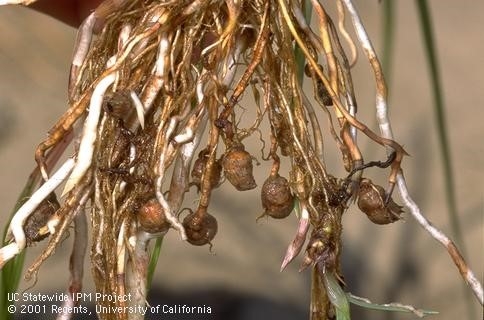- Author: Ben Faber
Rain is unusual in that it germinates weed seeds and then the need to manage them in some fashion arises. Many subtropical tree growers do not like the potential impact of pre-emergent herbicides on tree growth due to potential damage to shallow roots. Lemon growers rely fairly heavily on the post-emergent glyphosate, especially since there are cheap generic versions available. I don't know of many avocado growers who use a pre-emergent, using the natural mulching effects of fallen leaves, introduced mulch, the natural shading of the canopies and glyphosate.
I am not aware of any field studies that have shown that pre-emergents can cause root damage or reduction of tree growth or yield. There are a number of registered chemicals with different modes of action, so one would expect to see more use as practiced in other tree crops, but there is a reluctance that is based on some possible damage to trees. So, a lot of glyphosate is used and to some extent another material, glufosinate, is also used in citrus.
One of the issues that has arisen with glyphosate use has been the resistance of some weed species to this material. There are some thirty-seven species of resistant weeds in the world. In California orchards, the biggies are Hairy Fleabane, Horseweed and Johnson grass. Resistance means that you can spray the plants, even in their small stages and there's little or no effect. A non-resistant species would just wither, turn yellow and die down to the roots.
There are always plants like horsetail or purslane which have a surface that does not absorb material very well. They appear to be resistant, but aren't. Once you use the maximum dose, with a spreader-sticker or another adjuvant, the herbicide gets into the plant and it dies. Also, the key is timing, young plants being much more susceptible than bigger plants with a less absorptive surface.
This year, though with all the rains, there've been calls about not just horseweed being tough to get, but also nutsedge. Nutsedge, as far as I know, has no documented resistance, but it does have a waxy surface that gets thicker with the age of the plant. With all the weeds, people have gotten behind and the weeds have gotten out of hand and the older plants are harder to spray out. It takes more tact to get at them when they get older.
Nutsedge also reproduces from swollen underground stems called tubers or “nuts”. They aren't nuts – seeds – and some people mistake them for a grass, which they are not. They are a sedge. They reproduce primarily through the “nut” and they form lots of “nutlettes”, each of which can form a new plant. If you pull the plant up and don't get all those nutlettes, you are actually increasing the number of plants that will form. It is tricky to deal with and a good thorough spraying can control them, if done at the right stage.
It turns out that these nuts are eaten by lots of animals – pigs, chickens, humans. In the South, pigs and chickens have been used to clear fields of nutsedge before planting rice. The presents of nutsedge around the world is quite likely due to humans having spread it around the world as a food. A poor person's nut.
So, this brings me to the title of this article. Why not grow it for sale? Intercrop it with lemon. Drip irrigate the nutsedge separate from the trees and figure out the pesticide schedule and other management issues and there's a new crop for sale. Foraging for malva, nettle, mustard, pursalane, dandelions and other unconventional edible plants has become a big deal in urban agriculture. You see “wild plants” for sale in the farmers markets. Euell Gibbons has become not just fashionable but commercial. Kale has taken the country by storm. Who would have thought it?
Root System of Yellow Nutsedge




